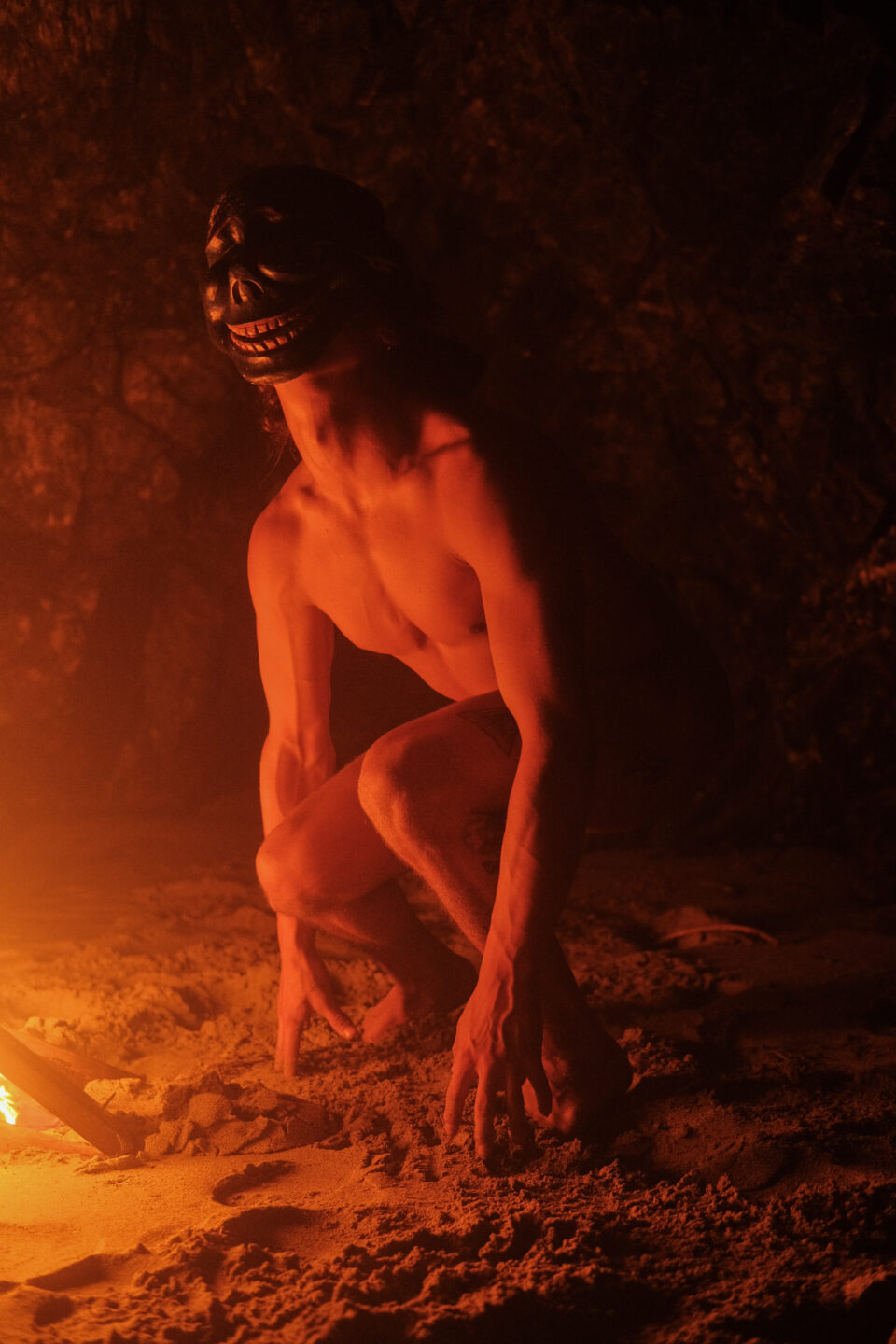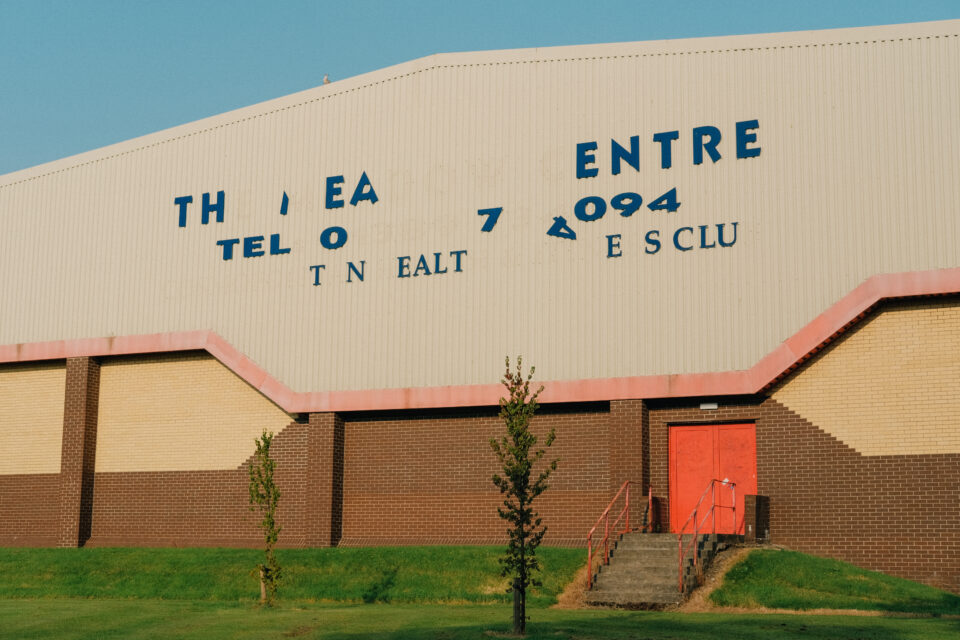
Luna Silvestri You have been selected for Sign of the Times, a digital and collective exhibition that talks about our relationship with outdoor and indoor spaces during this lasting pandemic. How did you experience this period and did it influence the way you portrayed your surroundings? What, in your photographs, addresses the issues of the Environment in the time of Covid?
Troy Holt Personally, I found the last year incredibly useful in a way, as lockdown allowed me enough time to work on things I’d never thought I would have the time for, and made me realize I can actually do a lot more with the time that I have. However, the most stressful part of covid was in February 2020, the months leading up to lockdown, where I felt like I was on a beach watching a tidal wave come in and everyone was still out and about buying ice creams pretending like the wave couldn’t touch us. I would like to think that my photographs really address that issue, that we conceive of ourselves as somehow apart from the environment, but that we should shift perspective, and see ourselves as a part of it. I think the run up to lockdown really showed that.
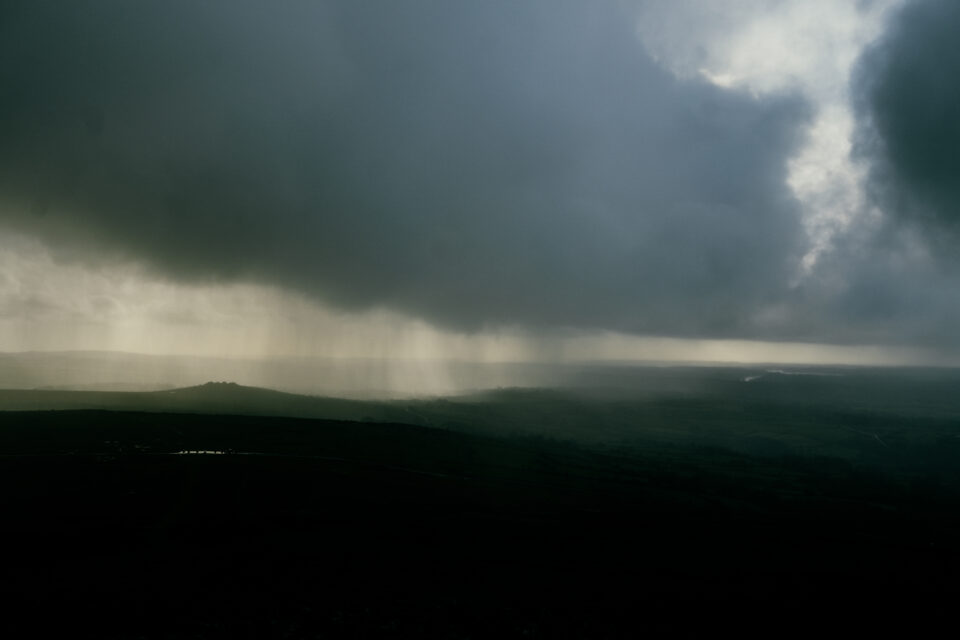
My photographs are, I hope, ambiguous enough that it gives space for interpretation, yet there is always a message in there somewhere that comes with whatever conscious/unconscious intentions are involved in taking that particular photograph. The first one I took during a storm in Devon, where I come from. I was thinking a lot about climate anxiety. See, the storms are very unusual here, but now they have become regular, and somehow we have become used to this new normality.
LS As curators, we referred to The Body is here 1.A for the poster of the exhibition, as it encompasses the general ideas that are addressed in this collaboration: how we have experienced covid with our surrounding spaces. What can you say about it?
TH This picture was taken in France after a hectic storm in Dieppe. We got into the harbour with a group of friends, and enjoyed a beer. Due to the weather, another boat was entering the harbour, and we had to stop it from clashing on ours. On the way I took that picture in so much of a rush. What I like about the series The Body is Here is the way things align in a magical and mystical way even though they are ultimately based in the disorder we often choose to ignore.
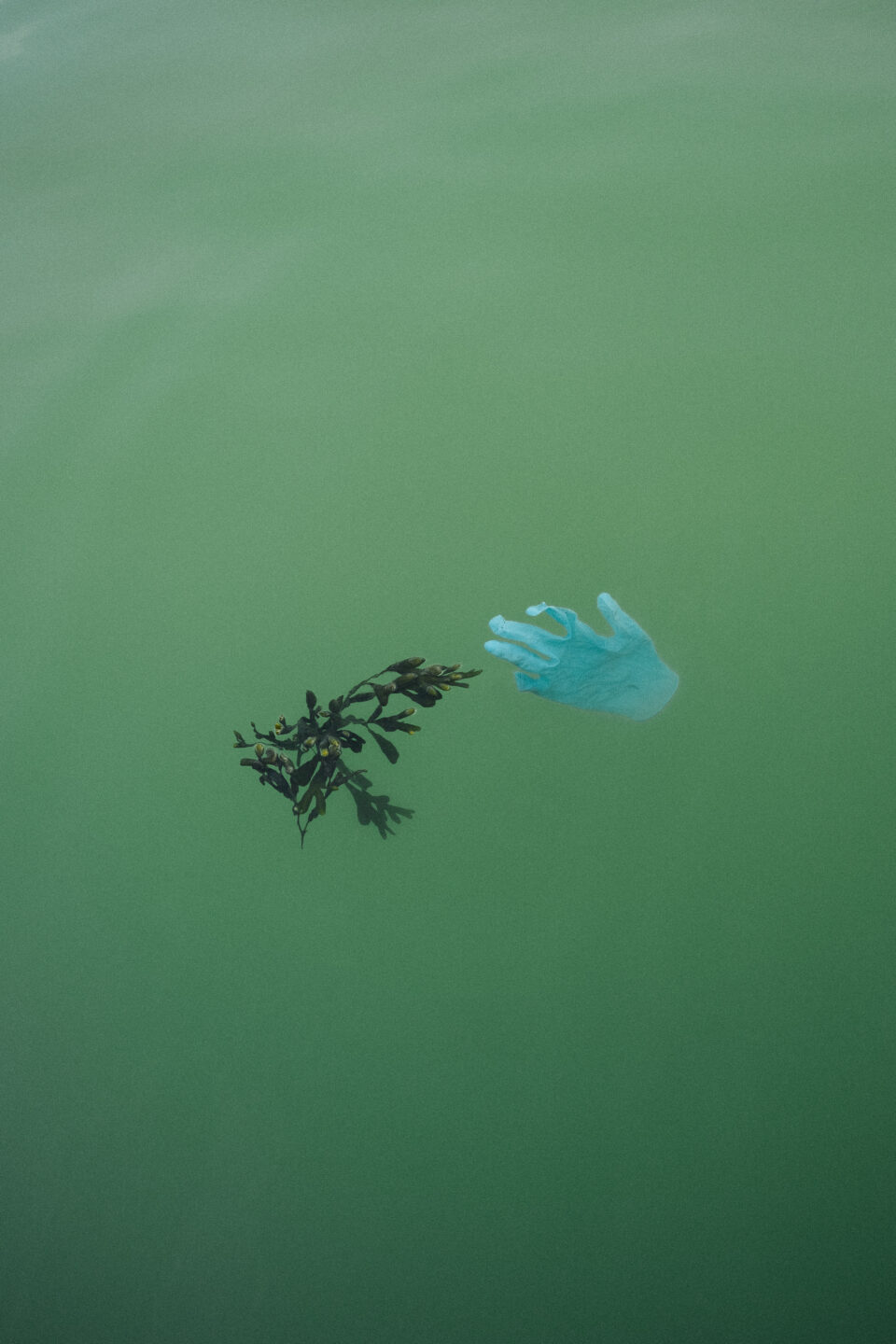
LS Some have told us how this picture recalls the Sistine Chapel fresco by Michelangelo, with nature coping with the sanitary crisis.
TH It’s funny how the art world is geared around expression, and yet is still so academic in its structure. Rules and definitions are sometimes over prioritised: like how hanging a normal photograph in a gallery all of a sudden makes it an ‘artwork’ with all the attached connotations and expectations. It always reminds me of one particular interview with Leonora Carrington, where she constantly challenges the interviewer, “don’t intellectualize me! don’t intellectualize me!”. I like her insistence, and I would like to think the pictures I take suffice for themselves too. People then read them with their own lenses. One sees Michelangelo, I see the storm in Dieppe.
LS Why holding the camera?
TH I used to game-design a lot on my computer when I was a bedroom-bound adolescent. Eventually, I took inspiration from the world, and interpreted the space around me, trying to recreate what surrounded me by taking pictures first. My dad used the camera a lot for his job, and I remember one instance where he left it on the dining room table and I took it out one evening and photographed some very cliched sunset shots. I liked how the camera made me look at the world. What I enjoy about photography is that I have the ability to do it without academic expectations or pressure imposed over my work. I see it as a separate entity from, say, university.
There are plenty of photographers I adore and admire, but I think the most important was Herbert List. My grandmother bought me a book of his when I started taking pictures and it really opened up to me. The way he projects myth onto everyday objects and people is incredible. I still find his work powerful to this day.
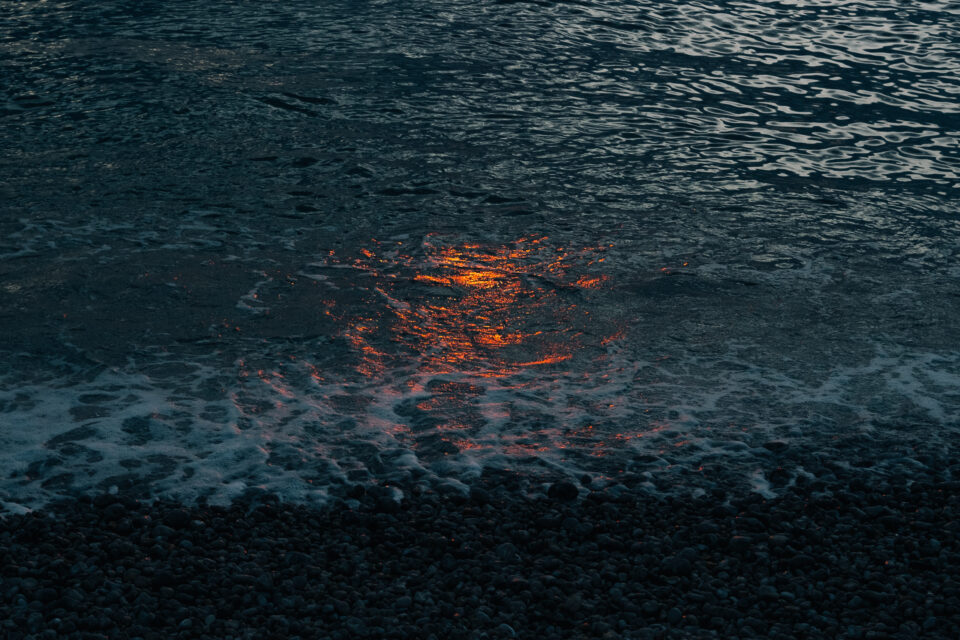
LS At this point, how would you describe yourself when you hold a camera? What is and isn’t a photographer for you nowadays, where technological innovation has made digital photography more accessible?
TH For me, a photographer is anyone holding a camera. Nowadays, there is a lot of discussion going on as to what constitutes photography and photographers. The categorization of photography is flawed. For example, if you photograph a sculpture, is your shot a picture of a sculpture or a photograph? I think being an artist of any kind is just a matter of deciding what you personally like and dislike and exploring that.
I keep noticing that people like the materiality of the camera rather than making photography. Some say “I have a Nikon”, some say “I have a Canon”, and so on. To me, the focus should be more on the outcome rather than on the medium.
LS Perhaps this is precisely the characteristic of photography: the democratization of the medium parallels the rise of consumerism from the mid fifties onwards. TH Consumerism and camera overlap for sure.

LS What is the process behind you making pictures?
TH It depends on the context. That classic Leonard Cohen quote “if I knew where all the good songs came from, I’d go there more often”. I think it’s really hard to pinpoint what it is with language, but it’s just very ‘knowable’ when you see something that just clicks. The shot is so quick, it bypasses my ability to rationalise the scene I’m processing. I like that photography doesn’t often need justification. I am not necessarily looking for something unless it’s a project I am working on. However, I like grasping elements out of reach that happen within a “normal” scenario. This scene I pictured in Plymouth, with this woman – probably drunk – lying under the bench, in front of a regular landscape, is a blurry between what is expected as a conventional reality and what is not.
LS I assume that photographing a sitter is a dual process, where the photographer and the sitter.s communicate with each other, reach some common grounds, or compromises even. Is that so for you?
TH Interesting because I don’t really do that kind of work, I think people are best at composing themselves, yet when you enter into that relation there’s an assumption that the photographer will know what is the ‘best’ pose to convey the sitter’s ‘self’. But I’m crap at that. I really admire people that can do that stuff properly because it’s so hard. I rather enjoy photographing specific moments that best portray the sitters, who often are my friends. None of the portraits I’ve done are staged.
LS Have you ever considered the ethics of photographing unknown people and how do you feel about it?
TH So far I have been lucky as most of the time people don’t mind if I photograph them. Though sometimes interacting and asking for permission leads you to better results. For example, the other day I was photographing along the Clyde canal, and I came across a group of guys tying a Union Jack to a signal buoy on the shore. One of them was wearing this incredible Union Jack onezie. I knew this was about the Ranger’s win in the football but I asked them what was going on and they told me it was and how Old Kilpatrick is a bit of a ‘Blue town’ as they called it. Then I asked the guy if I could take his picture, and he agreed as long as he could wear his mask to keep his anonymity for his job. He put on this dog mask and it immediately drew all the elements together in such a unique way that made me glad I asked.
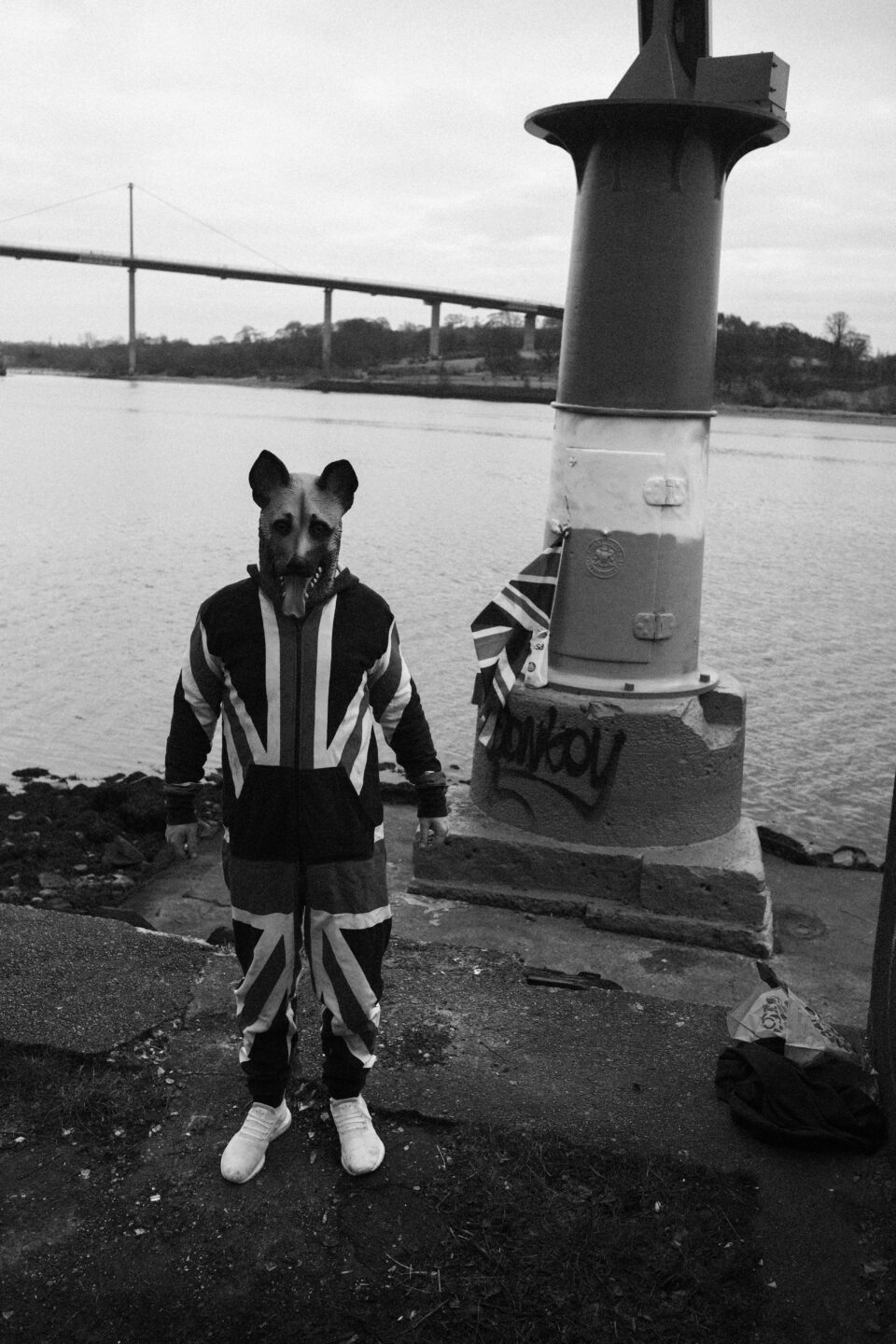
Learn more about Troy Holt’s photographic contribution on Sign of the Times (IG: @artgateblog and @relevoarts), as well as view his photographic portfolio.
